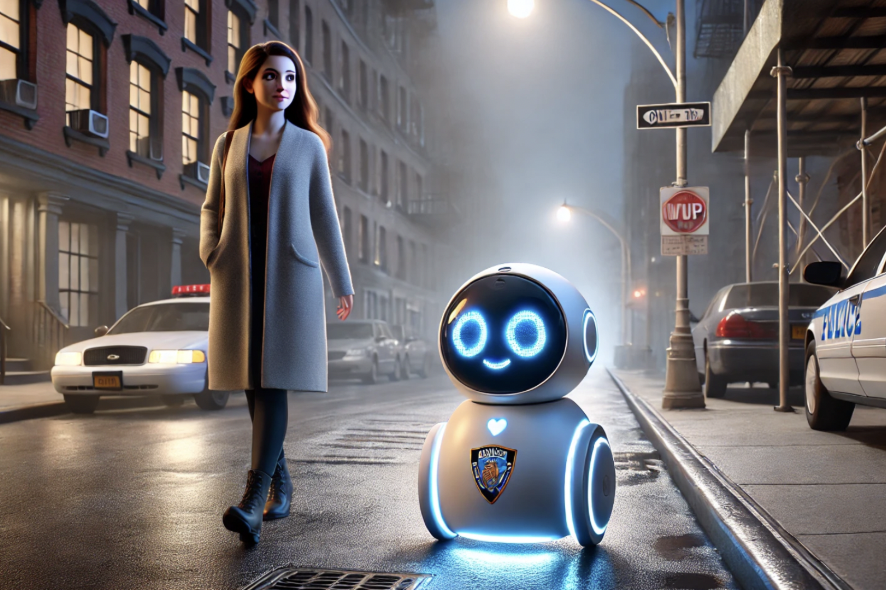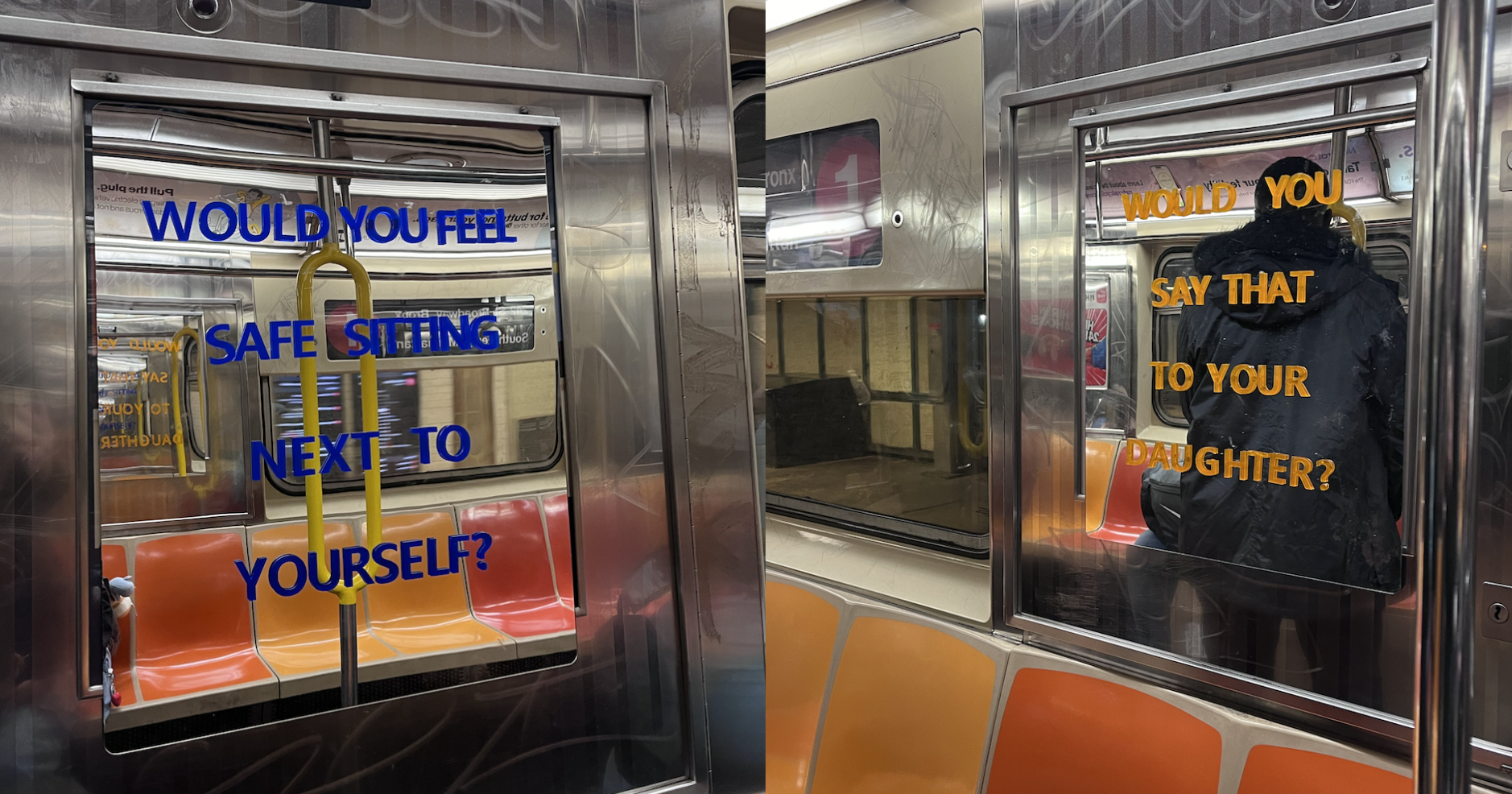The Design Process
1. Challenge
As part of my Human-Centered Design and Innovation course, my peers and I were placed into teams of 4 to
participate in a design challenge:
Make New Yorkers better people.
2. Approach
The challenge was a very broad starting point, so we brainstormed territories we were all interested in making an impact in including exploring, connecting with other people, and learning.
I proceeded by interviewing 3 New Yorkers and seeing if any of these themes came up. Exploring, tied in with transportation
were top of the list. Women in particular mentioned the dangers associated to using transportation in the city.
I used AI to generate prototypes for a few solutions which came to mind:
Our first problem statement revolved around either the lack of bystanders, or the presence of bystanders who do not know how to help.
Bystanders serve as witnesses and intimidate harassers indirectly, so I came up with this little robot which is connected to the police and is equipped with
a 360 camera and live location. Women can use an app to call one of these when it's time to walk to the subway, and it will accompany them and share
infomation with key contacts to ensure a safe commute.

A second idea was to establish a safety network in the subway. Hidden emergency buttons near seating areas and doors would allow passengers to quietly alert
authorities without drawing attention. When pressed, these buttons activate a silent alarm, notifying the train
conductor and transit police of the exact location and relevant situation details.

While these ideas helped women feel safer, neither abbided by the primary goal. Rather than fixing harassers, they were simply providing ways to make women feel safer.
I proceeded to another round of interviews in hopes of getting closer to a solution. While I was unable to interview harassers (or at least none which identified as having done such),
I found a variety of online sources highlighting reasons behind catcalling. It turns out that many men genuinely do not
understand the offensive nature of doing such thing.
Knowing that the lack of education was such a big part behind harassment, our problem statement was clear:
3. Prototyping + Testing
We moved on to brainstorm solutions around education.
 Our initial idea involved scannable posters which led to education apps. However, we found that harassers would be
unlikely to go out of their way to scan such a thing and engage with our solution. Instead, we ended up
with Reflect Respect NYC, a campaign that uses mirrors with empowering messages placed
in subway cars and stations to encourage self-awareness and deter harassment. Messages include:
Our initial idea involved scannable posters which led to education apps. However, we found that harassers would be
unlikely to go out of their way to scan such a thing and engage with our solution. Instead, we ended up
with Reflect Respect NYC, a campaign that uses mirrors with empowering messages placed
in subway cars and stations to encourage self-awareness and deter harassment. Messages include:
“Catcalling isn't flirting.”
“Would you say that to your daughter?”
“Would you say that in front of your mother?”
“This ride shouldn't come with trauma - Respect personal space.”
“Respect is the reflection we all want to see.”
“Would you feel safe sitting next to yourself?”

After finalizing our prototypes, our team took the mirrors out to subways and stations. We
displayed them in traditional ad campaign spots, and observed subway riders' behaviors and reactions to
the campaign. I asked a few people what their immediate reactions to the messages written on the mirrors
and the responses were mainly positive:
4. Reflection
Due to the mirror effect, we expect that this campaign would be effective at influencing peoples behavior in the long term. Mirrors
are proven to make people more aware of themselves, so we hope that while looking at their own reflection and reading the reflective sentences,
subway riders will be more aware of their actions and words.
While I observed the behavior of countless people in the subway (both male and female),
not a single male was willing to answer questions regarding their impressions on the campaign.
I approached a couple and while the woman provided insights, men said he did not feel comfortable
speaking on the subject.
This is interesting as harassers are mainly male-identifying, meaning these men probably did
not want to come across saying something "wrong". However, this also lowers the chances of improvement
in our campaign for the future and also throughout our prototype iterations as we were never truly able
to hear from people who approximate our target audience.
We also had people think that sentences such as "would you feel safe sitting next to yourself" had racial implications.
In the future it would be important to get peoples' feedback specifically on the sentences in order to make it clear that our campaign is
designed specifically for harassment.